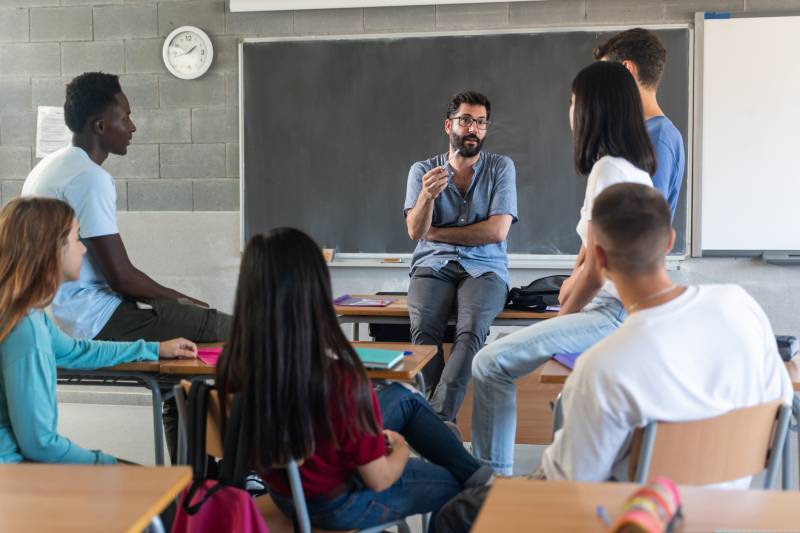Every year, K-12 schools across the country welcome hundreds of thousands of newcomers – foreign-born students who have migrated, are seeking asylum, are refugees, are undocumented or are unaccompanied – into their classrooms. Among the multitude of challenges that these students face is entering a completely new education system, often in a language that is unfamiliar. But the strain is also felt by teachers both in general education and English language acquisition classrooms.
Newcomer students in today’s global context present “nuances that make it particularly important for the educators to have support to be able to serve these children and their families in the best way possible,” said Luisiana Melendez, a clinical professor at the Erikson Institute in Chicago. From his own teaching experience, Sam Finn, who is currently director of Newcomer Policy and Practice at Californians Together, said that burnout happens when educators are forced to overextend their time in the classroom to accommodate newcomers in a system that does not prioritize those students. According to Melendez, “Educators are at the center of what can be done, but they need the support and the connections and the ability to network because they can’t do it alone.”
Teachers with newcomer students in their classroom need to receive proper professional support in order to effectively welcome these students. Although English language acquisition has traditionally been the data marker for newcomer student success, Jessica Lander, a high school teacher and author of Making Americans, wants to see the definition of newcomers’ academic success broaden.
According to Melendez, Lander and Finn, developing school-wide intake systems and creating support networks for educators are two ways schools can support teachers so they can support newcomer students.
Expanding the definition of newcomer students
Historically, a newcomer student has been defined as any immigrant who has arrived in the U.S. educational system without a working knowledge of English, according to Melendez. Today that may mean a child or teenager who has refugee status or has recently arrived in the United States and been transported to a sanctuary city, Melendez explained. These students may or may not know English, but they have “probably experienced quite a lot of trauma,” and are adjusting to “a new educational system, a new learning system, a new language,” she continued.


